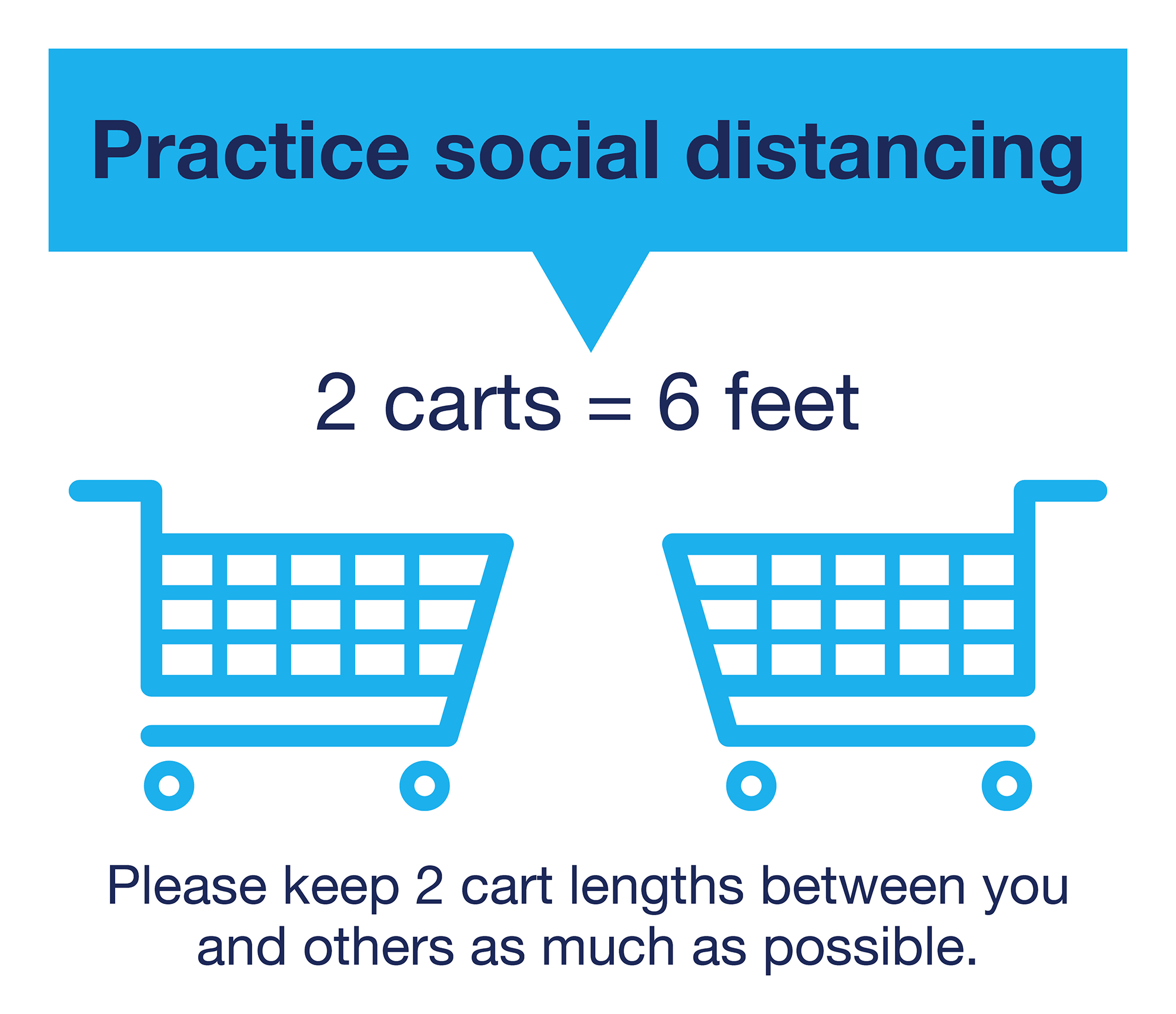While COVID-19 has accelerated the growth of online grocery shopping, more than 60% of Americans still shop for groceries in person.1 To remain competitive and attract their share of in-store shoppers, grocers must provide a hygienic and safe in-store experience.
Changes inside grocery stores
Technology holds great promise for making shopping convenient—and safer. For example, Robot Sally is a robot programmed to make salads for customers.2 Another is touch-free payment with credit cards and phones.
Many retailers are responding to current shopper concerns through a range of safety measures. These include:
- Creating wider and one-way aisles
- Providing and encouraging more self-check-out options to limit direct contact between shoppers and thoroughly cleaning checkout registers after each transaction
- Staggered check-out lines and setting up a “do not cross” line in front and behind counters
- Installing plexiglass shields at checkout registers and service desks to limit the risk of germs spread between employees and customers
- Providing employees with face masks and shields
- Creating a rotation for your team so that not all staff are customer-facing all day
- Restocking shelves outside of open hours as much as possible to reduce staff contact with shoppers
Whether customers shop online or in person, grocers can meet new hygiene standards and customer needs with basic products like paper towels, soap, and sanitizer.
Focus on frequently touched areas

Inside grocery stores, significant improvements in hand hygiene and cleaning continue across the country. For example, many stores are making hand sanitizer and disinfectant wipes available to shoppers as they enter the store. Others are modifying store hours to allow for high-risk customers to shop at certain hours and for more thorough deep cleaning at night. That deep cleaning should follow CDC guidance on disinfecting, including the use of EPA-registered antimicrobial chemicals.
Grocers are also dedicating more staff time and resources to clean frequently touched areas throughout the day. Stores are also sanitizing shopping carts and handles more frequently.
Importance of clear and positive messages

In addition, sharing clear and timely messages can reassure shoppers about what we’ve learned during the pandemic about hygiene. The FDA has stated that “There is no evidence of food or food packaging being associated with the transmission of COVID-19.” This is a critical message to state on signage throughout stores.
Grocers should also take a close look at their checklists for cleaning and all signage throughout stores. Floor signage is helpful to guide customers and employees on the appropriate direction to walk and avoid crowding. Place “wear a mask” signs at the store’s entrances and use PA system to promote social distancing.
Meeting shoppers where they’re at
More than ever, shoppers are checking out grocery products online. One way that grocers can benefit both online and in-person shoppers is by improving website functionality.3
Shopping for food in the future is likely to involve a mixture of in-person and online shopping. For example, a growing number of shoppers are buying groceries online but picking them up curbside.4 Many top grocery chains in the U.S. now offer curbside pickup, including Walmart, Target, Publix, and Costco.
While acknowledging the impact of on-line shopping, Food Marketing Institute President and CEO Leslie Sarasin recently said in a statement that the industry is responding to what customers say. “The food industry will continue to listen to consumers and let them guide us on how to best meet their changing household needs,” she says. “Whatever comes next, we know the supply chain is tremendously resilient and that we can flex, pivot, and accommodate the demands of the nation’s grocery shoppers.”5
For shoppers, enhancing the customer experience is about making health, safety, and convenience a priority. For additional resources, download the Safe at Work: COVID-19 Grocery and Pharmacy Toolkit from Tork.
Sources
1 foodlogistics.com: More Than 60% of Americans Still Grocery Shop In-Person, Despite Growth in Online Shopping and Grocery Delivery Due to COVID-19
2 The Takeout: Sally the robot angling to replace the salad bar in your local grocery store
3 Digital 360: Online grocery shopping soars and retail has an edge
4 EMarketer: Online grocery sales will increase by nearly 53% this year
5 Business Wire: FMI Signature Research Evaluates Impact of COVID-19 on Grocery Shopping Habits
